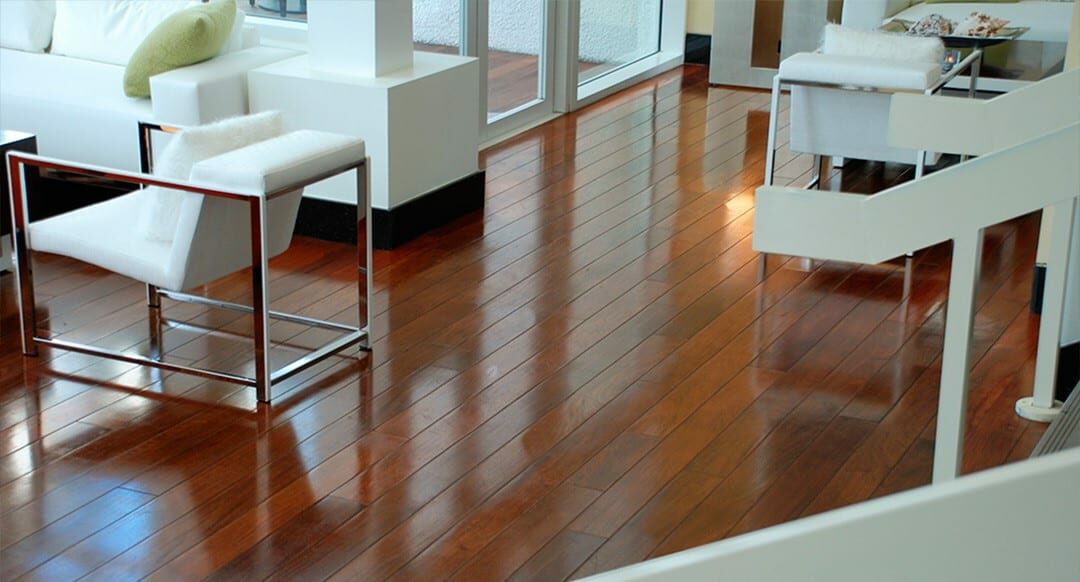London:
Nationwide:
The Benefits of Using a Rotary Buffer for Floor Sanding
Posted on January 1, 2024
Buffing
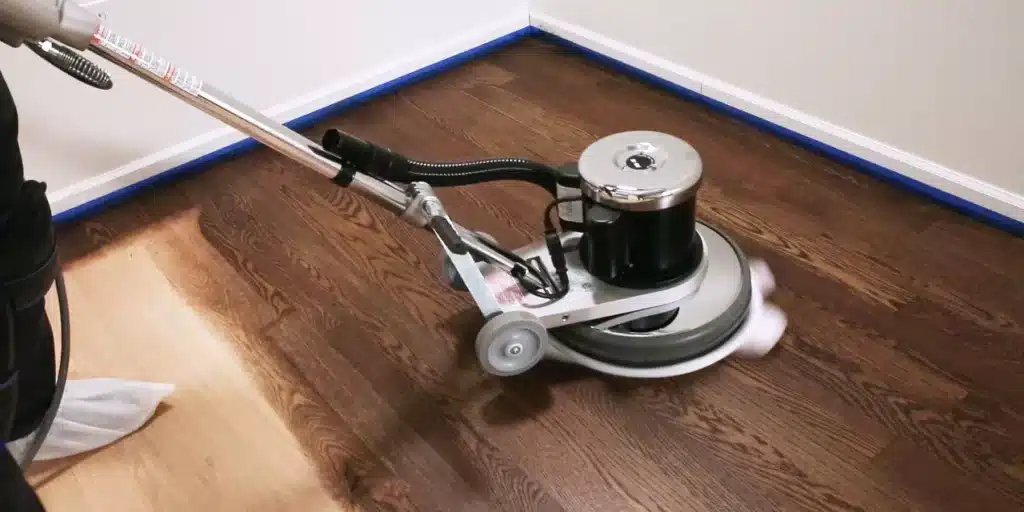
Unlocking the Advantages of Utilizing a Rotary Buffer for Floor Sanding
Wood Floor sanding is a crucial step in the process of revitalising the appearance of your floors. Whether you’re a homeowner looking to restore the lustre of your hardwood floors or a professional in the flooring industry, you understand the importance of achieving a smooth, even surface. Traditionally, floor sanding has involved the use of drum sanders and other manual methods, which can be time-consuming and physically demanding.
However, in recent years, a game-changer has emerged in the world of floor sanding: the rotary buffer. This versatile tool has revolutionised the way we approach floor sanding, offering a range of benefits that make the process more efficient, less labour-intensive, and ultimately more effective.
In this blog post, we will delve into the advantages of using a rotary buffer for floor sanding. We’ll explore how this innovative tool works, when it should be employed, and why it has become a preferred choice for both professionals and DIY enthusiasts. Whether you’re a seasoned floor sanding pro or someone considering tackling a flooring project for the first time, understanding the benefits of a rotary buffer can make a significant difference in the quality and ease of your work.
So, let’s embark on this journey into the world of floor sanding with rotary buffers and discover how they can transform your approach to floor restoration.
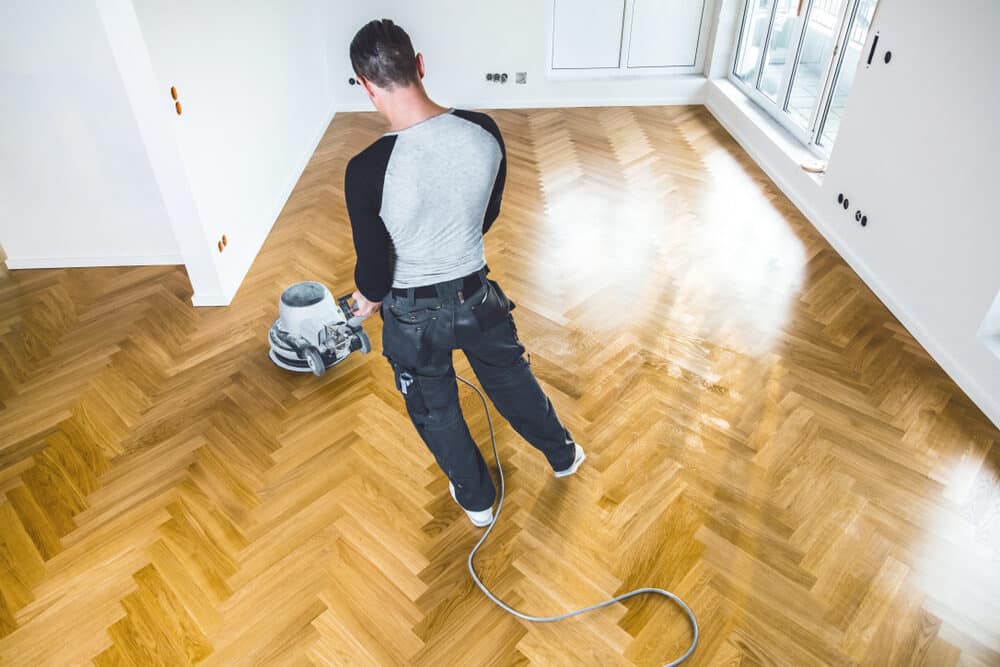
The Basics of Floor Sanding
Before we dive into the advantages of using a rotary buffer, let’s first establish a foundation by understanding the fundamentals of floor sanding. Floor sanding is an essential process for restoring the appearance of wooden floors and preparing them for refinishing or re-coating. Here are some key points to grasp:
1. Why Sanding is Necessary
Flooring surfaces can become worn, scratched, stained, or uneven over time due to foot traffic, furniture placement, and general wear and tear. Sanding is necessary to:
- Remove surface imperfections and scratches.
- Eliminate old finishes and coatings.
- Create a smooth, level surface for refinishing.
- Reveal the natural beauty of the wood grain.

2. Traditional Floor Sanding Methods
Traditionally, floor sanding involved the use of drum sanders, belt sanders, or hand-held sanders. These methods required a significant amount of physical effort and often produced a considerable amount of dust, making the process more labour-intensive and time-consuming.
3. Introduction to Rotary Buffers
Enter the rotary buffer, a modern solution that simplifies and streamlines the floor sanding process. Rotary buffers, also known as floor buffers or floor polishers, are versatile machines originally designed for polishing and buffing floors. However, when equipped with the appropriate sanding attachments, they can also be used for sanding tasks.
How a rotary buffer works
Now that we’ve covered the basics of floor sanding, it’s time to delve into how a rotary buffer operates and why it’s such a valuable tool for this task.
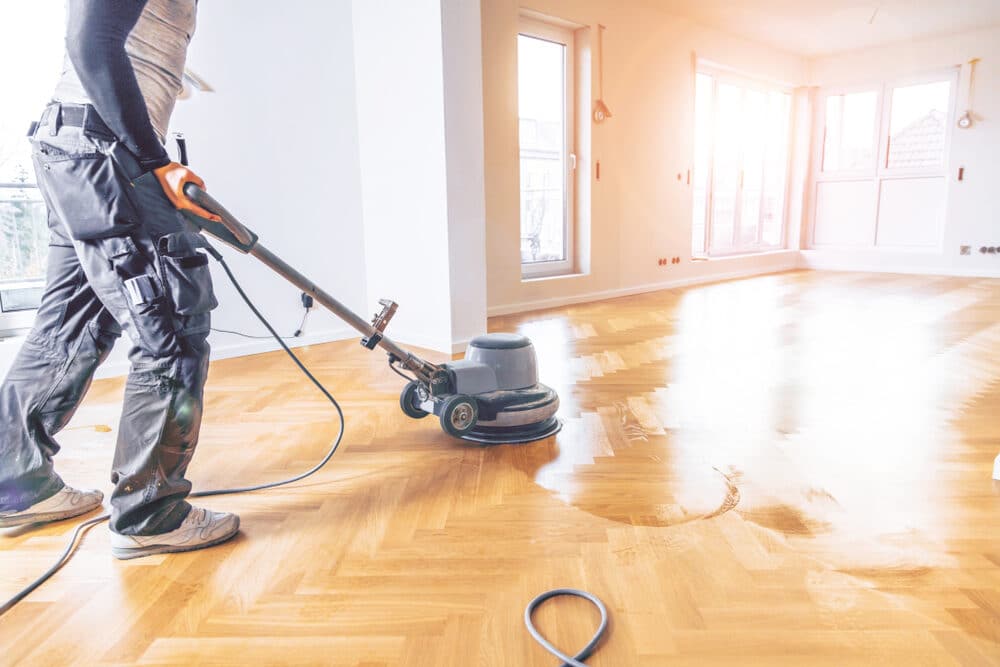
1. Mechanics of a Rotary Buffer
A rotary buffer is a powerful, motor-driven machine with a circular rotating head. It’s designed to operate at high speeds, typically between 175 and 300 revolutions per minute (RPM), making it efficient at removing material from the surface of the floor. The key components and mechanisms that enable a rotary buffer to work effectively include:
- Motor: The heart of the rotary buffer is its electric motor, which provides the necessary power to drive the machine. These motors are designed to deliver consistent and reliable performance.
- Circular Buffer Head: Attached to the motor, the circular buffer head is the part of the machine that comes into direct contact with the floor. This head can accept various types of sanding pads or abrasive screens, depending on the specific sanding task.
- Handle and Controls: Rotary buffers are equipped with handles that allow the operator to guide and control the machine’s movements. Additionally, there are typically user-friendly controls for starting, stopping, and adjusting the speed of the buffer.
2. Components of a Rotary Buffer
To use a rotary buffer for floor sanding, you’ll need a few essential components:
- Sanding Pad or Abrasive Screen: These attachments are affixed to the buffer’s head and come in various grits. Coarser grits are used for initial sanding to remove imperfections, while finer grits are used for smoothing the surface.
- Dust Collection System: Many rotary buffers have built-in dust collection systems or can be connected to external vacuums. This is crucial for controlling dust and maintaining a clean working environment.
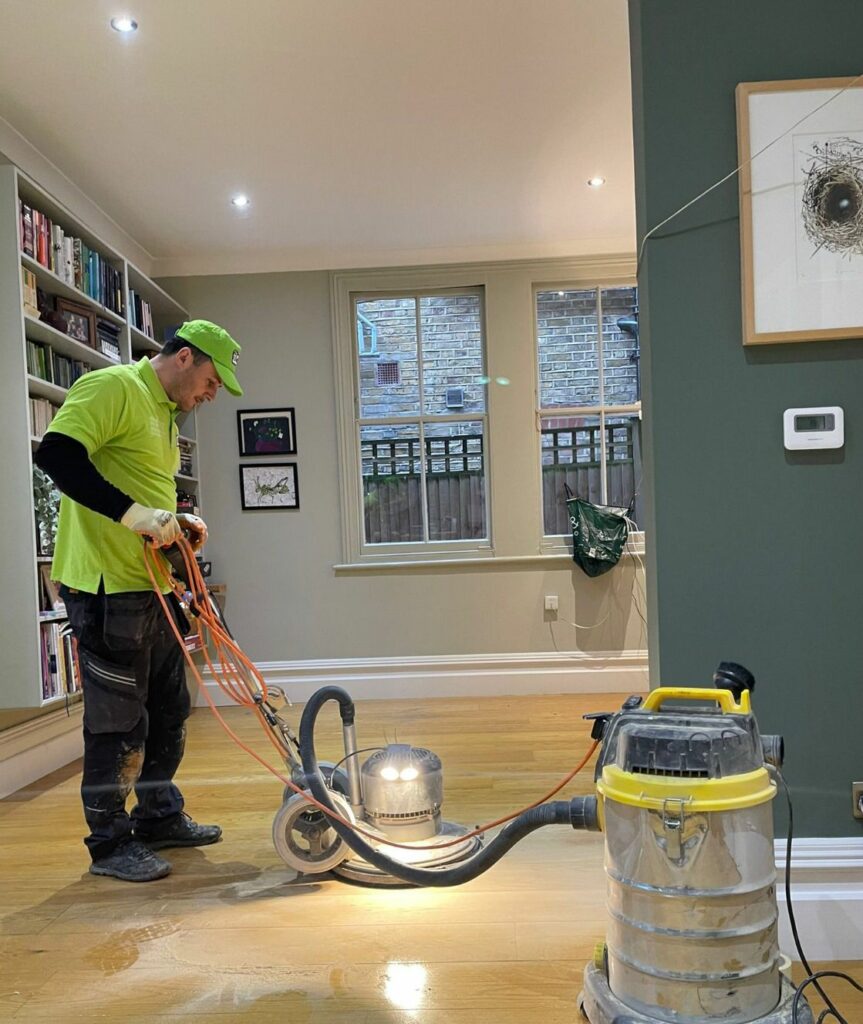
3. Different Types of Buffing Pads
When it comes to floor sanding, the type of sanding pad or abrasive screen you choose will significantly impact the results. Some common options include:
- Diamond-Coated Pads: These are highly effective for removing tough coatings and levelling uneven surfaces.
- Sanding Screens: Screens are mesh-like abrasive sheets that are ideal for fine sanding and blending.
- Abrasive Discs: Discs are available in various grits and are suitable for both wood and concrete floors.
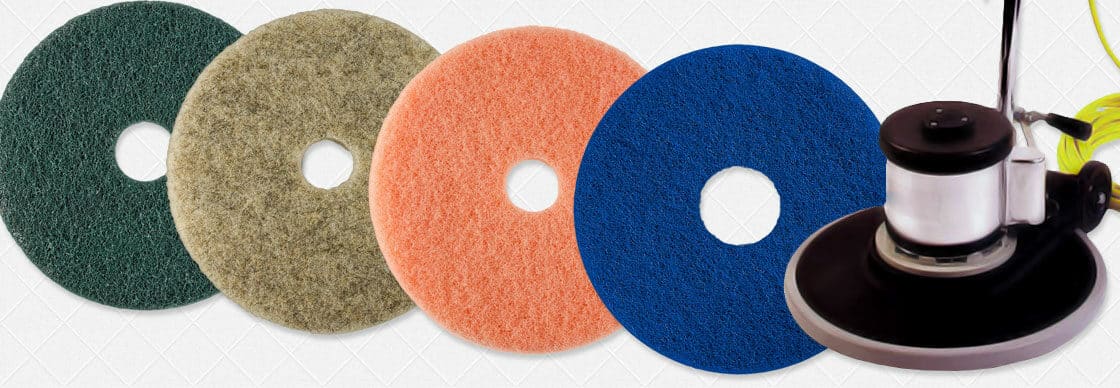
The Advantages of Using a Rotary Buffer
Now that we’ve explored how a rotary buffer operates, let’s uncover the numerous advantages it brings to the floor-sanding process. Using a rotary buffer offers several benefits that have made it a preferred choice for professionals and DIY enthusiasts alike.
1. Efficiency and Speed
One of the standout advantages of using a rotary buffer for floor sanding is its efficiency and speed. The high-speed rotation of the buffer head allows for rapid material removal. Compared to traditional floor sanding methods that can be labour-intensive and time-consuming, rotary buffers can significantly reduce the time required to sand a floor. This efficiency is especially beneficial when working on larger areas.
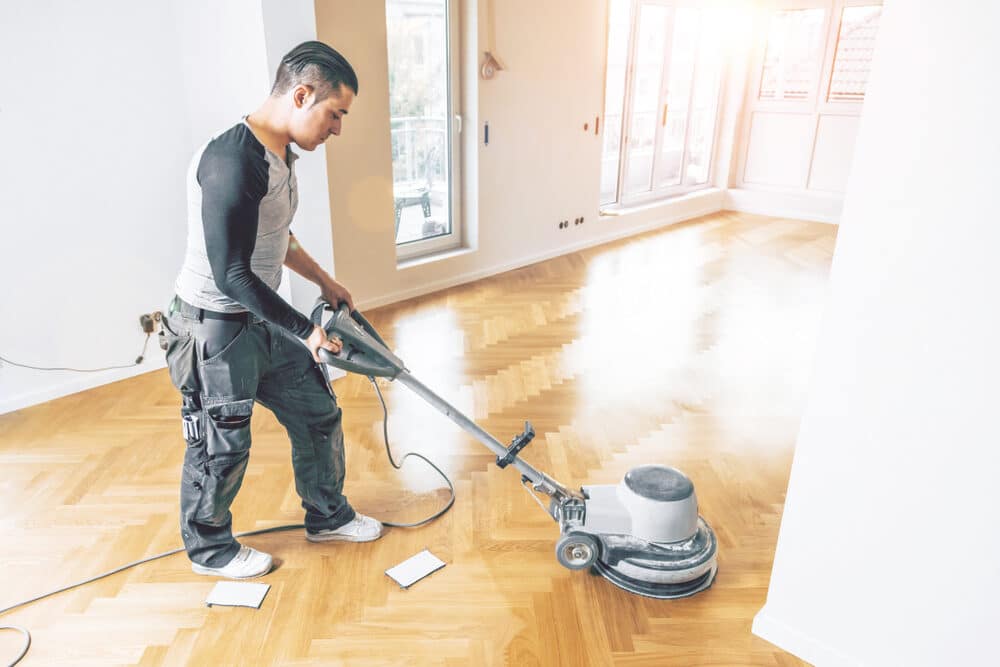
2. Uniformity and Consistency
Rotary buffers are known for their ability to provide uniform and consistent results. The circular motion of the buffer head ensures that the sanding action is even across the entire floor surface. This means fewer instances of uneven spots or over-sanded areas, resulting in a smoother and more professional finish.
3. Dust Control
Dust control is a critical factor in any floor-sanding project. Traditional sanding methods can generate a substantial amount of dust, leading to a messy and potentially hazardous work environment. Rotary buffers often come equipped with built-in dust collection systems or can be easily connected to external vacuums. This feature helps keep dust levels to a minimum, making the sanding process cleaner and safer for both the operator and the surrounding area.
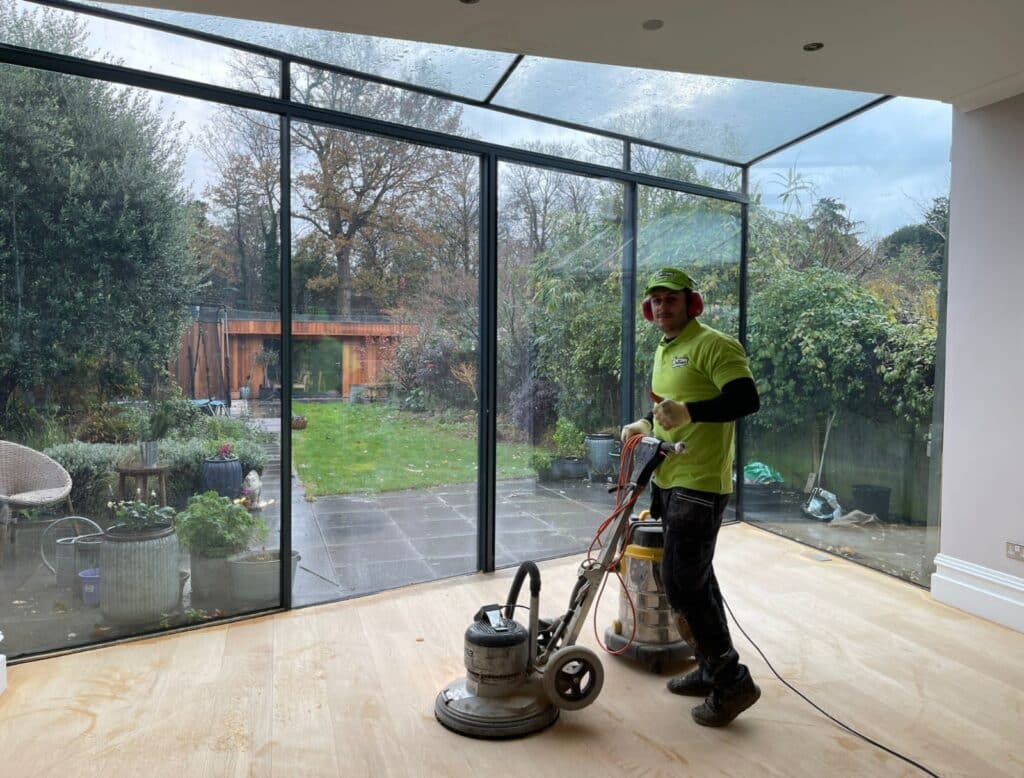
4. Versatility
Rotary buffers are versatile machines that can be used for a variety of floor maintenance tasks. Beyond sanding, they are also employed for polishing, buffing, and even stripping old floor finishes. This versatility makes them a valuable investment for those who need to tackle different types of flooring projects.
5. Less Physical Strain
Compared to traditional sanding methods that require significant physical exertion, using a rotary buffer is less physically demanding. The machine does the heavy lifting, and the operator primarily guides its movements. This can reduce fatigue and the risk of strain-related injuries, especially during extended sanding sessions.
When to Use a Rotary Buffer
While rotary buffers offer a range of advantages for floor sanding, it’s essential to know when to use them to maximise their benefits. Understanding the right situations for employing a rotary buffer will help you achieve the best results in your flooring projects.
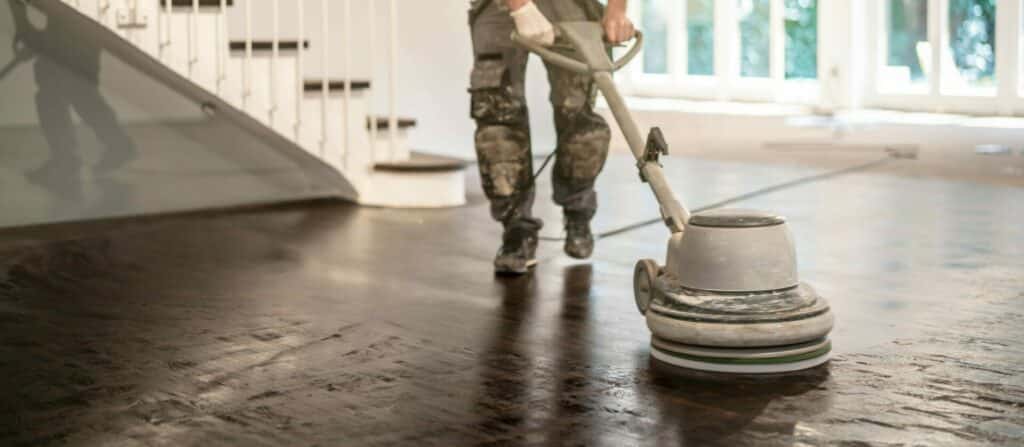
1. Types of Flooring Suitable for Rotary Buffing
Rotary buffers are particularly well-suited for certain types of flooring materials and conditions, including:
- Hardwood Floors: Rotary buffers are excellent for sanding and refinishing hardwood floors. They can efficiently remove old finishes and imperfections while maintaining the integrity of the wood.
- Engineered Wood Floors: Engineered wood floors have a real wood veneer layer on top, and rotary buffers can be used to refresh their appearance without compromising the veneer.
- Concrete Floors: When equipped with diamond-coated pads, rotary buffers are effective at grinding and polishing concrete floors, making them suitable for use in industrial and commercial settings.
- Large Areas: Rotary buffers shine when it comes to sanding larger areas due to their speed and efficiency. They are an ideal choice for commercial spaces, gyms, and open-concept living areas.
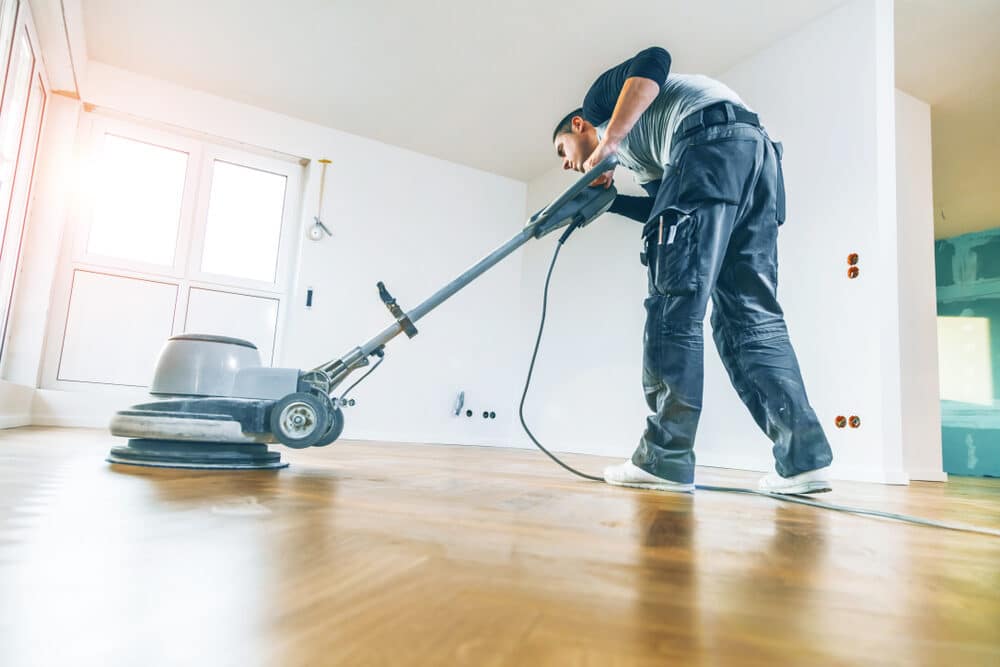
2. Situations Where Rotary Buffing is Ideal
Consider using a rotary buffer in the following situations:
- Floor Maintenance: Routine floor maintenance, such as polishing and buffing, can be efficiently accomplished with a rotary buffer. It helps restore shine and prolong the life of your floors.
- Floor Refinishing: When your floors have lost their lustre or have visible wear and tear, rotary buffers can be used to remove old finishes, sand out scratches, and prepare the surface for refinishing.
- Large Projects: For projects involving extensive floor areas, rotary buffers save time and effort compared to manual sanding methods. They are a practical choice for professionals working on sizeable commercial projects or homeowners tackling large rooms.
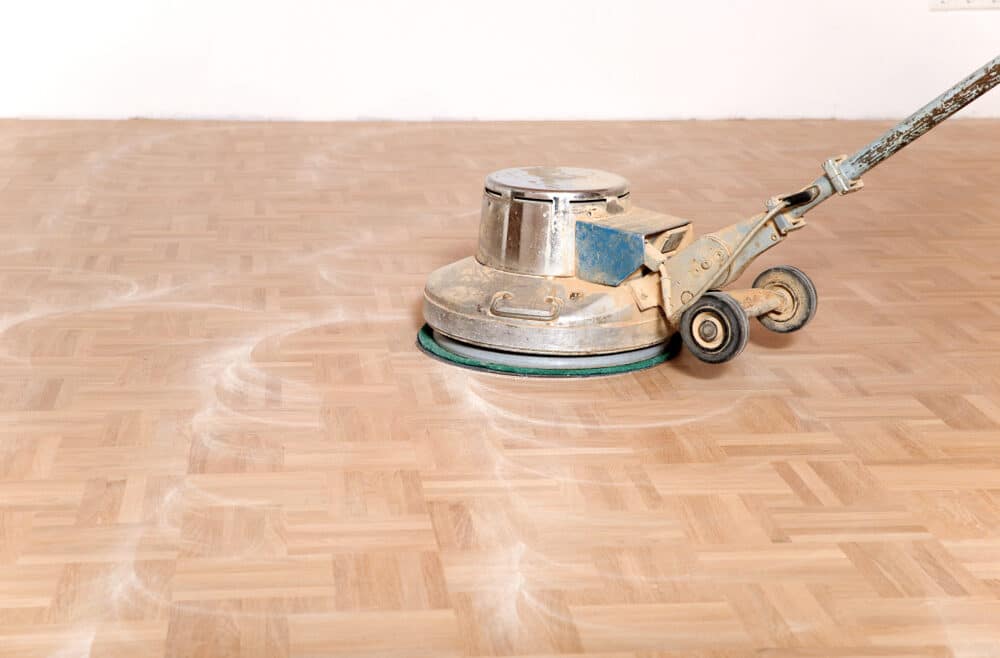
3. When Not to Use a Rotary Buffer
While rotary buffers offer many advantages, there are situations where they may not be the best choice. Avoid using a rotary buffer in the following scenarios:
- Inexperienced Operators: If you’re not familiar with using a rotary buffer, it’s best to practice on a smaller, less visible area before tackling a larger project to avoid mistakes and uneven results.
- Delicate or Fragile Floors: Some delicate flooring materials, such as softwoods or certain types of laminate, may not withstand the aggressive sanding action of a rotary buffer. In such cases, it’s essential to choose a more suitable sanding method.
Rotary buffer vs. other sanding methods
When it comes to floor sanding, there are various methods and tools at your disposal. Understanding how a rotary buffer compares to other sanding methods will help you make an informed choice for your specific project. Let’s explore the key differences and considerations:
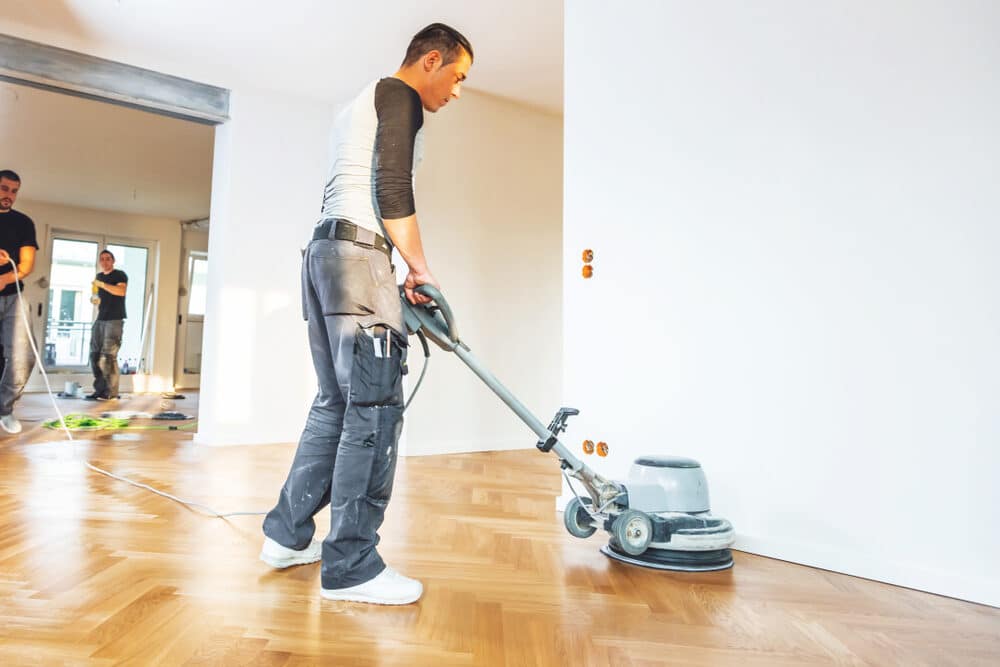
1. Comparison with Drum Sanders
Drum sanders are a traditional choice for floor sanding. Here’s how they compare to rotary buffers:
- Sanding Mechanism: Drum sanders utilise a large rotating drum with abrasive sandpaper attached. Rotary buffers, on the other hand, have a circular buffer head.
- Efficiency: Drum sanders are effective at aggressive material removal but may require multiple passes to achieve a smooth finish. Rotary buffers are generally more efficient and require fewer passes.
- Dust Control: Drum sanders tend to generate a significant amount of dust, whereas rotary buffers can be equipped with effective dust collection systems.
- Physical Demands: Operating a drum sander can be physically demanding due to its weight and the need to control its movements. Rotary buffers are lighter and put less strain on the operator.
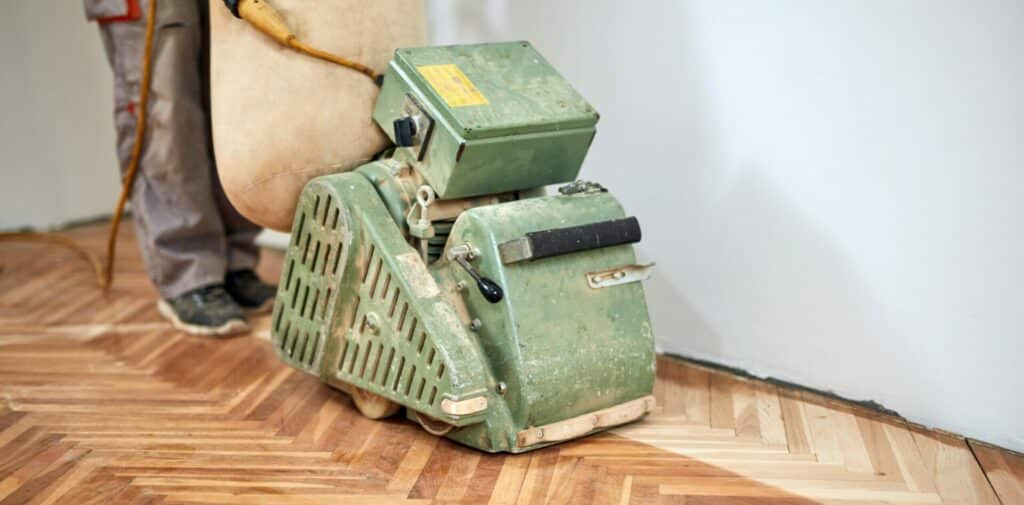
2. Orbital Sanders vs. Rotary Buffers
Orbital sanders are another common choice for floor sanding. Here’s how they compare to rotary buffers:
- Sanding Motion: Orbital sanders move in a circular or elliptical motion, while rotary buffers have a purely circular motion.
- Surface Uniformity: Rotary buffers are known for providing more uniform and consistent results compared to orbital sanders.
- Efficiency: Orbital sanders are typically slower at material removal than rotary buffers, making the latter a quicker option for larger projects.
- Versatility: While rotary buffers can be used for various floor maintenance tasks, orbital sanders are primarily designed for sanding and may not offer the same versatility.
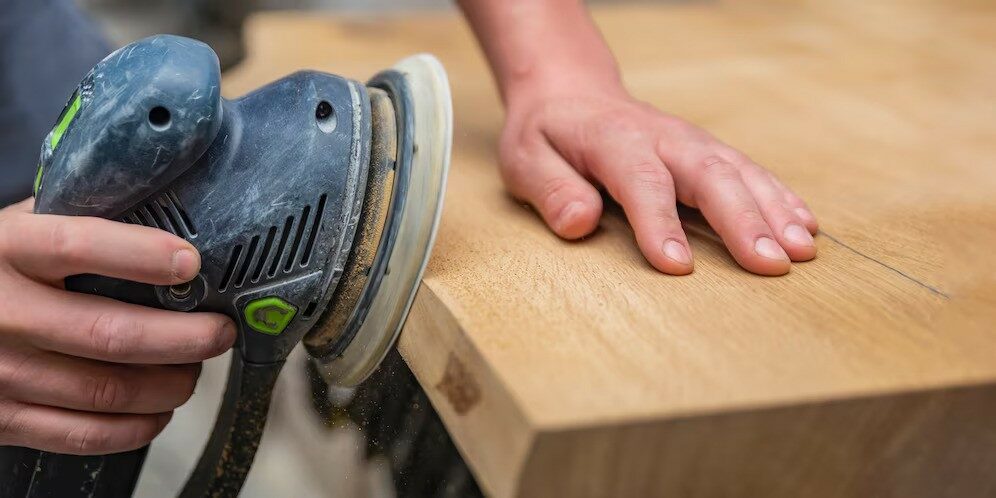
3. Pros and Cons of Each Method
- Rotary Buffers:
- Pros: efficiency, uniformity, dust control, versatility, and reduced physical strain.
- Cons: May require some practice for inexperienced users; not suitable for all types of flooring.
- Drum Sanders:
- Pros: Effective material removal, suitable for initial sanding, can handle tough imperfections.
- Cons: It generates a lot of dust, can be physically demanding, and may require multiple passes.
- Orbital Sanders:
- Pros: suitable for fine sanding, less aggressive than drum sanders, good for detail work.
- Cons: Slower material removal may not be as efficient for larger areas.
Conclusion
In the world of floor sanding, the choice of tools can significantly impact the outcome of your project. In this blog post, we’ve explored the numerous advantages of using a rotary buffer for floor sanding and learned how it compares to other sanding methods.
Rotary buffers have revolutionised floor sanding by offering efficiency, speed, uniformity, dust control, versatility, and reduced physical strain. Whether you’re a professional in the flooring industry or a homeowner looking to restore the beauty of your hardwood floors, a rotary buffer can be a game-changer.
By understanding when and where to use a rotary buffer, you can make the most of its benefits. It’s particularly well-suited for hardwood floors, engineered wood floors, concrete surfaces, and large projects. However, it’s essential to exercise caution and practice if you’re new to using a rotary buffer to achieve optimal results.
While rotary buffers offer many advantages, it’s worth noting that they may not be suitable for all situations or all types of flooring. There are instances where other sanding methods, such as drum sanders or orbital sanders, may be a better fit.
In the end, the choice of sanding tool should align with your specific project requirements, your level of expertise, and the condition of your floors. Whether you opt for a rotary buffer or another method, proper preparation, technique, and maintenance are key to achieving outstanding floor sanding results.
We hope this guide has shed light on the benefits of using a rotary buffer for floor sanding and provided valuable insights into when and how to use this versatile tool. With the right approach and equipment, you can transform your floors and breathe new life into your living spaces. Happy floor-sanding!

Sanding
We provide virtually dust-free sanding with our continuous belt machinery with mobile extraction units, giving you a safer environment for your family.
Oiling
This organic finish not only adds beauty to your home but also has exceptional water-repellent characteristics, making it easier to clean and maintain.
Waxing
This natural floor finish offers the softest and most mellow appearance – and leaves your floor able to breath.
Buffing
Using soft buffing machines (and hand-polishing where required) will bring a wonderful sheen to your newly-finished floor.
Repairs
We offer a full assessment of your wooden floors to determine what repairs are needed to provide the perfect working surface for the later stages of sanding, staining and sealing.
Restoration
We offer a comprehensive restoration process designed to address floors that are improperly fitted or damaged over time through wear and tear.
Request a fixed price quote for your wood floor restoration now
Simply enter your postcode below to get started.
Services
Wood Floor Sanding Wood Floor Restoration Wood Floor Scratch Repair Squeaky Wood Floor Repair Parquet Floor Sanding Parquet Floor Restoration Commercial Floor Sanding Church Floor Sanding Community Centre Floor Sanding School Floor Sanding Gap Filling Gap Filling with ResinCopyright © Mr Sander®
Privacy & Cookies Terms & Conditions Complaints Procedure Cancellation Rights Sitemap
